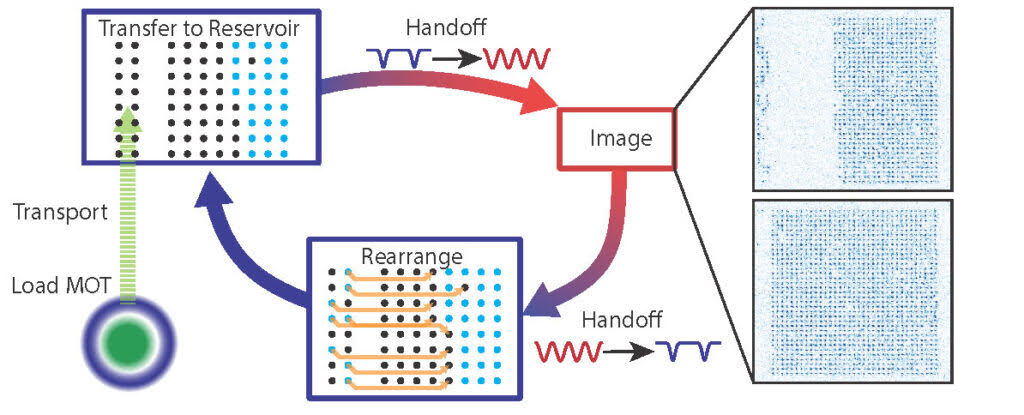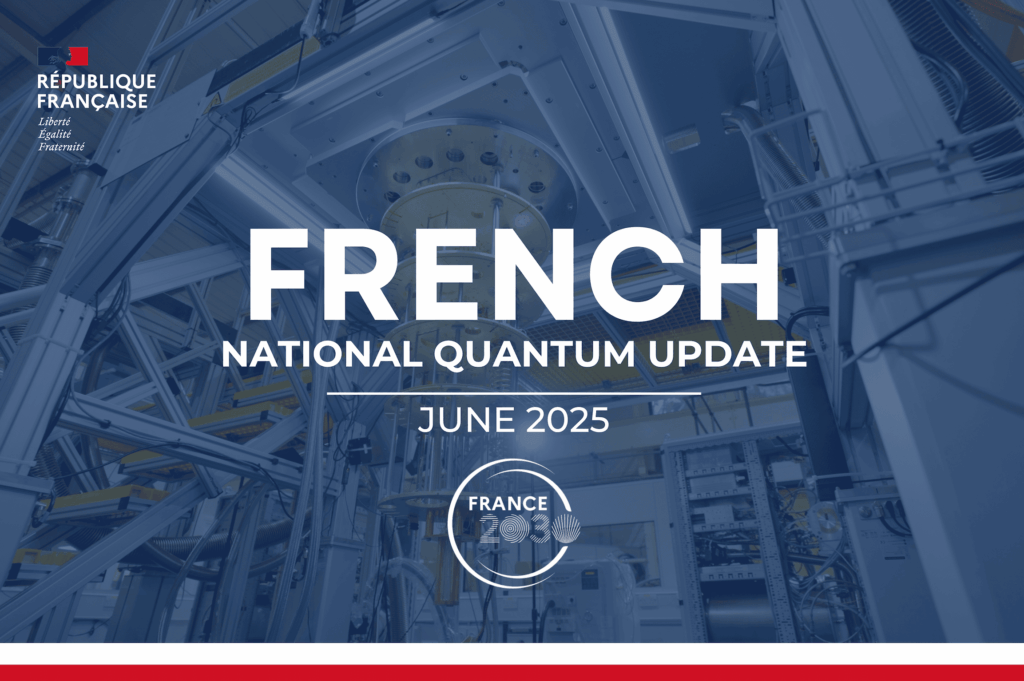Insider Brief
- Atom Computing researchers have invented a way to keep the atomic array at the heart of the company’s quantum computing technology continuously populated with qubits.
- The researchers released a paper describing how to assemble a 1,200-plus qubit array.
- Officials say the work ensures that as Atom Computing scales to larger numbers of qubits, its technologies can efficiently perform mid-circuit measurement.
PRESS RELEASE — Researchers at Atom Computing have invented a way to keep the atomic array at the heart of the company’s quantum computing technology continuously populated with qubits.
In a preprint article on arXiv, the Atom team describes its approach both to assembling a 1,200-plus qubit array and for overcoming atom loss, a major technical challenge for quantum computers that use neutral atoms as qubits.
Dr. Ben Bloom, Founder and Chief Technology Officer, said the advancements ensure that as Atom Computing scales to larger numbers of qubits, its technologies can efficiently perform mid-circuit measurement, which is necessary for quantum error correction, and other operations.

“All quantum computing technologies need to demonstrate the ability to scale with high-fidelity qubits,” he said. “Neutral atom systems are no exception.”
Technical challenges
Atom loss occurs for numerous reasons. Qubits can be knocked out of place by stray atoms in a vacuum chamber or occasionally disrupted during “read out” when they are imaged to check their quantum state.
All quantum computers that use individual atoms as qubits (such as trapped ion or neutral atom systems) experience atom loss. But the problem is particularly acute for neutral atom quantum computing technologies.
With neutral atom technologies, developers often assemble arrays (two-dimensional grids) with extra qubits to act as a buffer. The system still experiences loss but has enough qubits to run calculations.
Another approach involves slowing down the read out to reduce the number of qubits lost during the process. But this method has the disadvantage of slowing down operations and is less efficient.
It also is difficult to replace individual qubits within an array. The conventional practice is to throw out the entire array and replace it with a new one, which becomes unwieldy and time consuming as systems scale.
“Error correction will require quantum information to survive long past the lifetime of a single atom, and we need to find effective strategies to reach and stay at very large qubit numbers,” Bloom said.
Atom Computing’s approach
To overcome these challenges, Atom researchers have engineered novel solutions into the company’s next-generation quantum computing systems, which will be commercially available within the next year.
Outlined in the arXiv paper, Atom Computing has developed a method to continuously load ytterbium atoms into the computation zone and store them until needed. Individual atoms are moved as needed into the array to replace missing qubits using optical tweezers (concentrated beams of light).
In addition, our researchers have designed and installed an optical cavity into our quantum computers that creates large numbers of deep energy wells to hold qubits tightly in place when imaged. These deeper wells help protect qubits, reducing the number that are lost during read out.
These innovations have enabled the Atom Computing team to demonstrate that we can consistently fully load a large atomic array with more than a thousand qubits.
“We’ve known from the beginning that we needed to overcome these challenges if our technology is to successfully scale, operate efficiently, and achieve our goal of fault-tolerant quantum computing,” Bloom said. “It’s exciting to be able to showcase the solutions we have been developing for the past several years.”
For more market insights, check out our latest quantum computing news here.
















